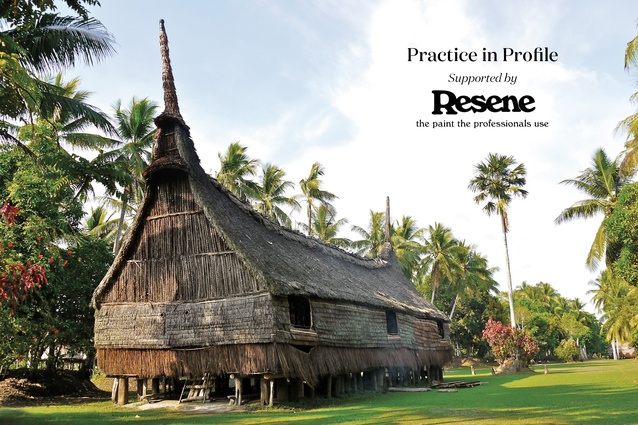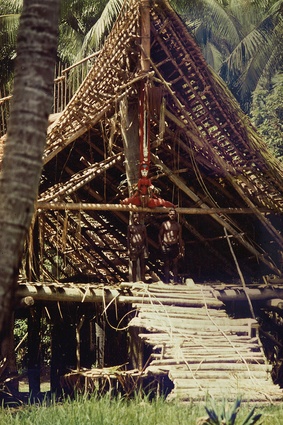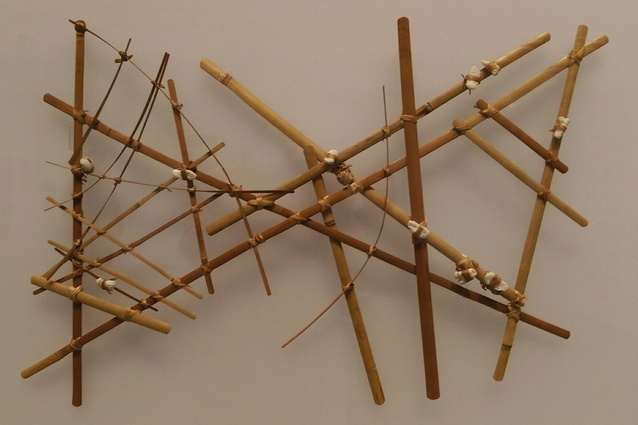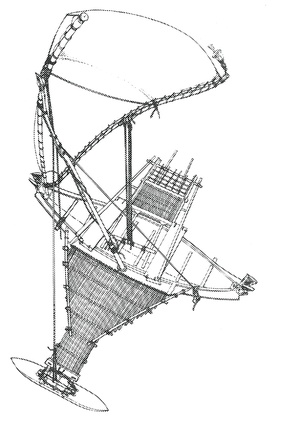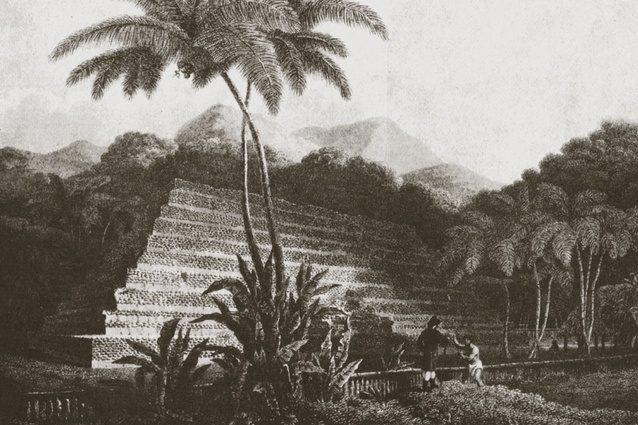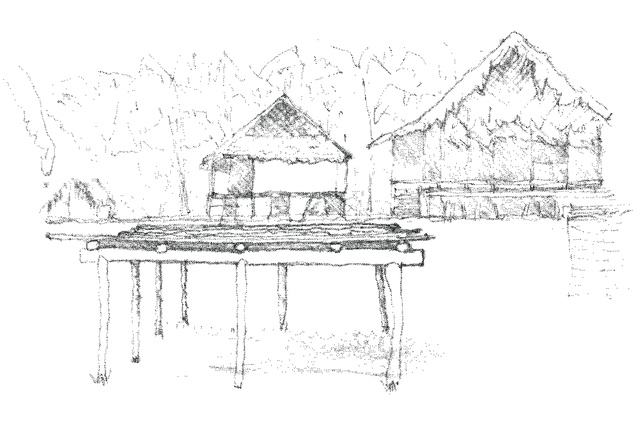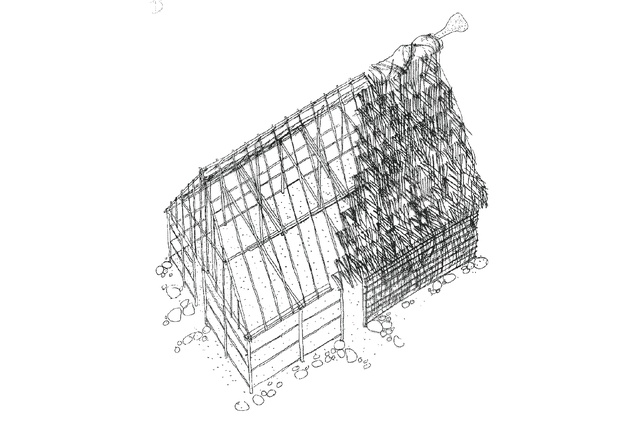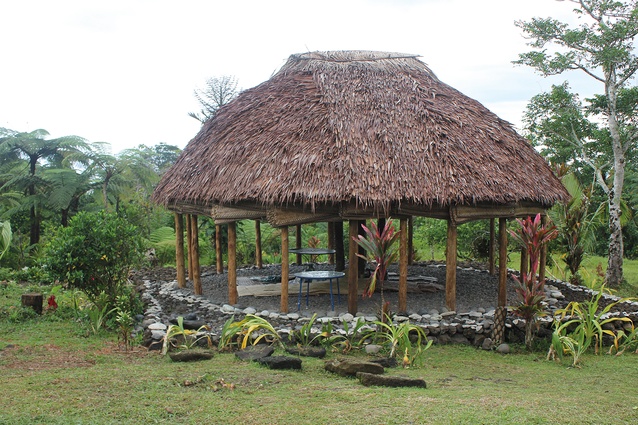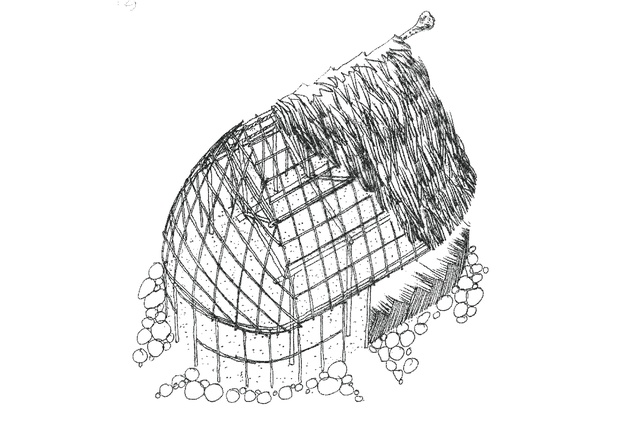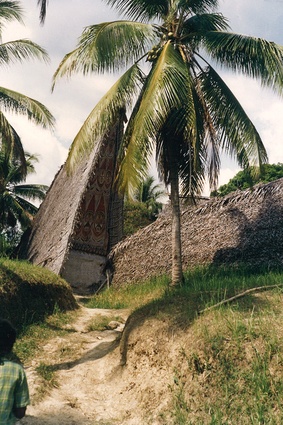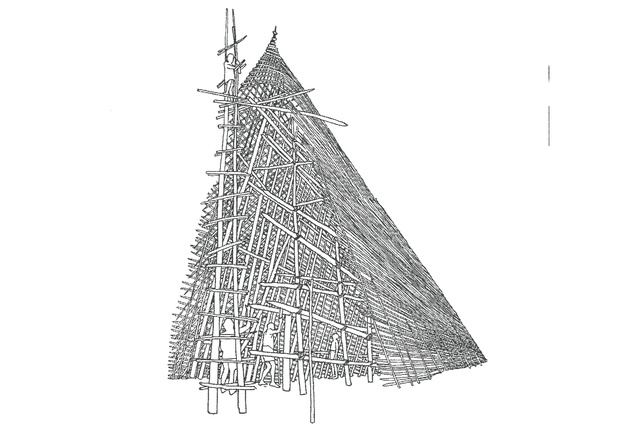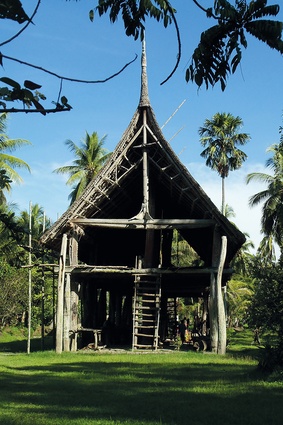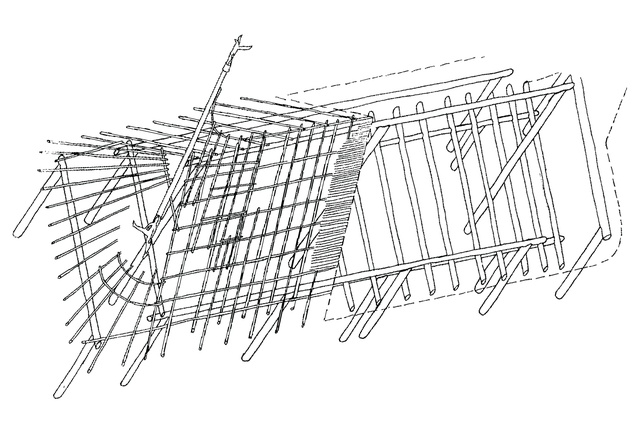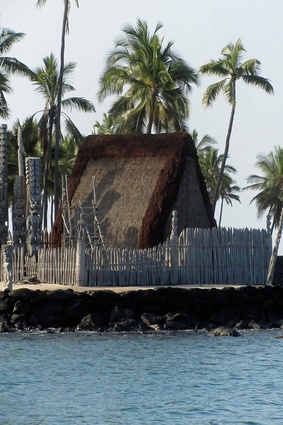Architecture of an ocean
Mike Austin reflects on his decades of research and teaching on the building forms he has encountered in the vast territory of the Pacific. He finds recurring themes that establish a Pacific architecture based on marine technology and platforms of in-between and ultimate openness.
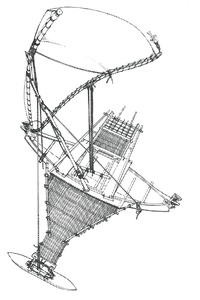
Pacific Island architecture is increasingly talked about and illustrated but what is it? In the past, it has consisted of gestures and motifs in an attempt to appeal to a certain regional relevance, in spite of regionalism having attracted continued theoretical criticism. One of the issues is the question of what constitutes a region.1 There is something strange about a Pacific regionalism that consists of ocean stretching from pole to pole and covering one-third of the surface of the planet. However, for maritime people, the ocean between islands is not necessarily a barrier but, instead, a connection. Epeli Hau’ofa talks of ‘a sea of islands’ and proposes:
“It is probably true to say that no major geographical region in the world is as integrated as the South Pacific. We are, for all practical purposes, a single economy and, increasingly,
a single society.”2
Traditional Pacific maps attempt to deal with the nature of the ocean, such as wave patterns and currents, while European charts are obsessed with the land – even when it is under the sea. There has long been a tripartite division of Pacific islands, initiated by Dumont d’Urville 200 years ago in an address to the Geographical Society of Paris. Incidentally, d’Urville had said about Māori settlement in Tokomaru Bay:
“The surrounding country offers to the gaze of the navigator smiling woods, lovely valleys, and two or three pās of some considerable size. One of them, especially situated about a league from the sea, a white patch in the middle of a space cleared of trees, with its regular line of huts forming an amphitheatre, reminded me somewhat of the little towns in the Greek Archipelago.”3
In the European mind, there has been an upward social gradient from west to east in the Pacific, where Polynesians have been favoured over Melanesians. Also, there have been fanciful origin theories for Pacific people from every major continent in the world, except the closest (Australia). It now seems certain that migration in an easterly direction started from South-east Asia around six millennia before the present. It was possible to island-hop until there was a major ocean crossing from the Solomon Islands to Fiji and into the Polynesia triangle some 3000 years ago. This was followed by back migration and dispersal to the corners of the triangle (New Zealand, Hawaii and Easter Island).

This travel has been the source of controversy because it is against the prevailing winds, but it has now been pointed out that these winds are precisely the reason for the direction of travel, because they ensure that the explorers can return home.4 These return voyages have been replicated over the last half-century. The indigenous boats have often been regarded as inadequate for these lengthy sea journeys, as is indicated by the use of the derogatory term ‘canoes’ for what were sophisticated sailing vessels. There is an Oceanic way of building boats, which involves duplicating hulls, that is coupled with a continuing European prejudice against such multihulled crafts.
“The most obvious origin of the double canoe is that of two dugouts or simple canoes lashed either close together or a short distance apart. One would imagine that a contrivance so simple and practical for procuring stability and increased carrying capacity would have been adopted everywhere but it belongs almost exclusively to the Indo-Pacific area.”5
There has been a similar prejudice against Pacific buildings, seen as grass huts located in paradise (with, of course, its Eve), and it is assumed that no architectural effort is required. However, in the same way as it is possible to generalise about the Oceanic canoe as uniquely multihulled (but with detail variations), there are many generalisations that can be made about Pacific Island architecture, with a range of variations unique to each culture.
One generalisation that can be made about Pacific buildings is that they are always single-celled pavilions. Each one, from the smallest to the largest, is always unicellular. Differentiation and separation are not by walls and partitions but by space. These buildings are based on the gable cross-section which, it is not often appreciated, is an inherently unstable form without fixed joints, and fixing timber joints is difficult with fibre bindings and limited tools. However, the achievement ingenuity of these bindings is staggering. The gable is, of course, not confined to the Pacific but the characteristic of Oceanic buildings is that the ridge is propped, eliminating horizontal loads on the wall posts from the rafters.
Sometimes, the prop is truncated to become the king post of a truss but, always, the ridge is supported. In many locations, the ridge post is mythically the mast of a boat with symbolic associations with ancestors. In the Māori whare, the post (pou tokomanawa) is the heart of the ancestor who is the house. This is not the primitive hut that is claimed to be the origin of all architecture, by commentators from Vitruvius to Joseph Rykwert.6 Instead, it is derived from marine technology and several implications follow from this, such as the use of tension as a construction principle – for example, the roof is built from the ridge down and often the walls are suspended.
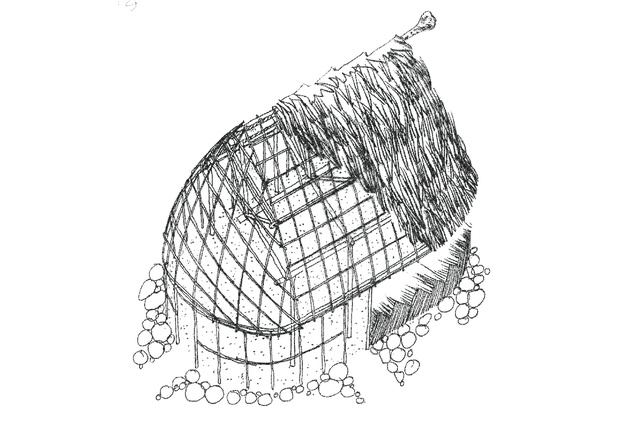
Differences between cultures are found in the treatment of the gable end. For instance, the Māori whare projects the gable out to produce the open porch (mahau). The so-called bure of Fiji is a simple enclosure, with a variety of treatments from gable to hip while, in the eastern parts of Fiji, the ends are rounded, and the house is known as a vale. The homes of the fale are Samoa and Tonga; the fale have variations of rounded ends, which are curved in two directions. The fale tele of Samoa combines the two gable ends with a truncated mid-section to produce a dome-like building suspended on one or three posts.
In Indonesia, some thousands of miles to the west, we find the Balinese version of the Pacific pavilion – the bale. Further on, are the extension and elaboration of the gable end in the houses at Tana Toraja in Sulawesi; these are extraordinary structural feats and serve to shelter the outside courtyard. Even further to the west, is the often-noted similarity of the Batak houses in Sumatra. These sagging roofs derive from the use of an upper ridge tying the rafters and ridge itself together.
In this sweep backwards over several thousand miles, we might look for explanations for the architectural variations of the gable end. One obvious one is climate. The extravagant roof extensions are presumably possible only where there are no high winds. Or, to put it another way, the presence of cyclones might be used to explain the fact that there tend to be rounded roofs in Polynesia while the roofs of Melanesia and Indonesia are pointed. Heat loss could explain the fact that the highlands houses of Melanesia, from Papua New Guinea to New Caledonia to Fiji, are round – making for minimal surface area.
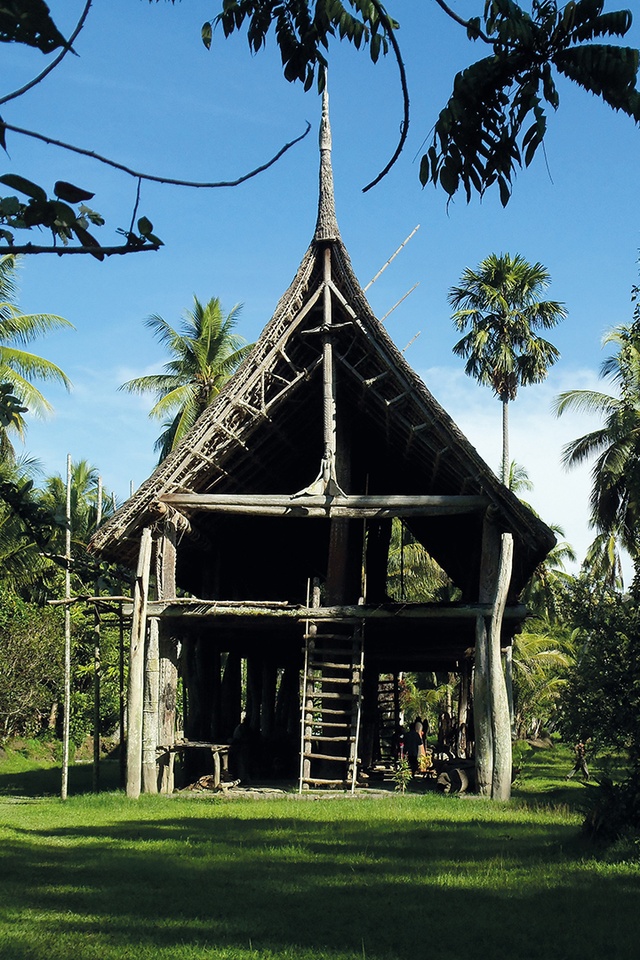
However, climate doesn’t explain all because, in Papua New Guinea, there is a wide variation of treatments within small areas, with arguments over who has influenced whom. The Maprik Haus Tambaran, which soars 25 metres into the air, has been argued to be conceptually and structurally identical to the nearby, but very different, Iatmul Haus Tambaran on the Sepik River.7 In the magnificent Iatmul houses, the upper ridge is propped at each end of the building on the so-called meri post, which sits on a beam, which sits on the cantilevered ends of the wall plates.
All of this high-wire, trapeze-like performance is hidden behind a suspended façade and accessible only to the men who occupy the house. This building exploits aspects of architecture, such as poise and balance, that we seem to apply to high-tech and engineering structures. This is an extension of propositions about the Māori whare reflecting the landscape (which seems to have somehow become a conventional wisdom) and the differing landscape contexts for each of these forms could offer an explanation of the differences.8
The floor of the Pacific hut is, structurally and conceptually, separate from the house and takes a variety of forms from the excavated floor of the whare, to the raised stone floor of the fale, to the timber platform floor of the Iatmul house, sitting in its open space dancing ground. Widespread in Papua New Guinea is the Haus Win, a platform raised above the ground of a settlement serving a variety of purposes. The Pacific platform is not a closed form; instead, it is the construction of openness. The well-known ma of Japan becomes the va of Polynesia, where it is the gap or interval: the in-between. It might derive from boats, where it is the platform covering the gap between the hulls of the multihulled canoe.
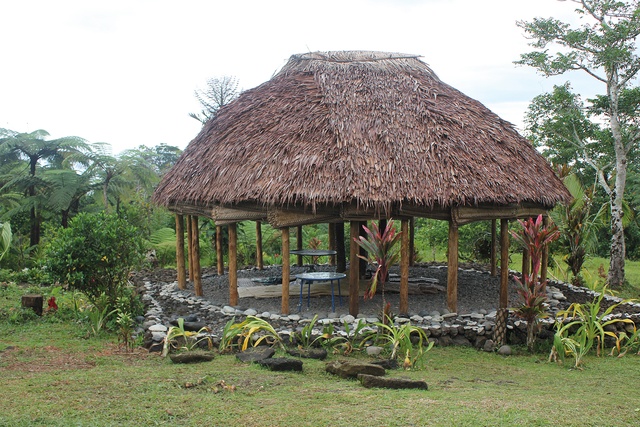
The space constructed by the clearing and platform is a palimpsest of the ultimate openness of the ocean (known as marae roa in Māori), where the closure is the meeting of sea and sky at the horizon. There are well over a thousand marae throughout the Pacific, and especially in East Polynesia, where Marae Taputapuatea on the island of Ra’iātea is now a World Heritage Site and significant as the setting-off point for voyaging fleets. Marae Mahaiatea in Tahiti (initiated by Tupaia prior to Cook’s visit) was commented on by Banks, who said: “certainly the masterpiece of Indian architecture in this Island so all the inhabitants allowed. Its size and workmanship almost exceeds belief.”9 In the Marquesas, there are numerous stone platforms everywhere for the house (paepae) and community (tofua), and the marae becomes a me’ae; in Hawaii, it’s a heiau, and the extreme example is in the eastern corner of Polynesia, with the Easter Islands the base for the well-known moai statues. And, as we know, the Aotearoa New Zealand marae has flowered in the last half-century to become a community institution, replacing, in many ways, the role occupied by the church.
This architecture mentioned is ‘traditional’, which, as Raymond Williams points out, “is used as a term of both dismissal and respect”.10 Tradition is defined by its opposition to the modern but the early modernists used Oceanic architecture and art as a formal source. Adolf Loos talked about the Papuan paddle and Gottfried Semper’s screen walls referred to the Pacific.11 Max Vogt has argued that the floating architecture of modernism, and specifically Le Corbusier’s pilotis, derives (via Switzerland) from the Pacific. Each Oceanic house tends to have a life and, therefore, a death, and on islands, as Arata Isozaki has pointed out talking about Ise shrine, “Thanatos is always near”.12
The consumption and appropriation of this architecture is not straightforward. The traditional architecture and artefacts have been incarcerated in museums where they are treated with respect but are inevitably re-contextualised. This cannibal consumption suggests that the architecture is, in fact, extremely powerful (dangerous even) and must be contained or consumed. It sometimes outlasts the architecture that contains it and it might be argued that it offers the possibilities and examples of another architecture and another world, known as the ‘Pacific Way’.
1 Mike Austin, ‘Pacific Island migration’, in Stephen Cairns (ed.) Drifting: Architecture and Migrancy, London, Routledge, 2004, p. 224.
2 Epeli Hau’ofa, ‘The new South Pacific society: Integration and independence’, in Antony Hooper et al. (eds.) Class and Culture in the South Pacific, Centre for Pacific Studies, the University of Auckland, and Institute of Pacific Studies, the University of the South Pacific, 1987, p. 2.
3 Bernard Smith, European Vision and the South Pacific, 1768-1850: A Study in the History of Art and Ideas, Oxford, Clarendon Press, 1960, p. 252.
4 Geoffrey Irwin, The Prehistoric Exploration and Colonisation of the Pacific, Cambridge, Cambridge University Press, 1992.
5 A.C. Haddon and James Hornell, Canoes of Oceania, volume 3, 1938, p. 43.
6 Joseph Rykwert, On Adam’s House in Paradise, Cambridge, Mass., MIT Press, 1981.
7 Mike Austin, ‘The House Tambaran of Papua New Guinea’, Assemblage, number 20, Cambridge, Mass., MIT Press, 1993, pp. 10–11.
Mike Austin, ‘Theory on the Sepik’, Interstices 4: Journal of Architecture and Related Arts, Auckland, the University of Auckland, (CD ROM), 1996.
8 Mike Austin, ‘The Polynesian marae’, The Second International Symposium on Asia Pacific Architecture: The Making of Public Places, Honolulu, University of Hawaii, 1997.
9 P. R. Bellwood, Man’s Conquest of the Pacific: The Prehistory of Southeast Asia and Oceania, New York, Oxford University Press, 1979, p. 339.
10 Raymond Williams, Keywords: A Vocabulary of Culture and Society, London, Fontana Press, 1979, p. 319.
11 Adolf Max Vogt, Le Corbusier, the Noble Savage: Toward an Archaeology of Modernism, Cambridge, Mass., MIT Press, 1998.
12 Arata Isozaki, The Island Nation Aesthetic, London, Academy Editions, 1996.

